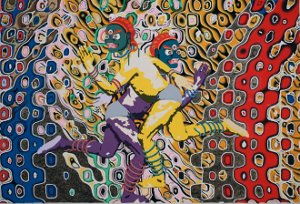
Arquivo para May 17th, 2024
There is a voice of truth
Although it is a preceding chapter in the book “The Heart of Heidegger”, chapter IV “Voice” could be a conclusion by Byung-Chul, however this is correct as it would not be a Heideggerian conclusion, the epigraph which is a quote from the book of Kings to the prophet Isaiah is symbolic: “Go out and stand on this mountain before the face of the Lord… and it came to pass, when Elijah heard it, that he wrapped his face in his face […]” (Han, pg. 107 ).
IV “Voice” could be a conclusion by Byung-Chul, however this is correct as it would not be a Heideggerian conclusion, the epigraph which is a quote from the book of Kings to the prophet Isaiah is symbolic: “Go out and stand on this mountain before the face of the Lord… and it came to pass, when Elijah heard it, that he wrapped his face in his face […]” (Han, pg. 107 ).
He searches the “series of indications” in Heidegger’s “Four Seminars”, the first is listening than writing, he proposes that there is a connection with metaphysics, while writing is fixed in “logocentrism”, he puts the listener in an affective tone of the appropriating event? And he responds with Plato’s speech about writing as “betrays the living and animated speech of the wise man” (Han, pg. 110), as it withdraws into interiority in time, differs from Hegel who sees “the truth of space” , interestingly the one who claims the story.
“The voice also fulfills the need for an unobstructed interiority, undisturbed by an exteriority” (Han, pg. 111) and it is important that “It creates the appearance of an absolute unworldly interiority” (pg. 111) and it is not about of the egocentrism of Cartesian reason, and of idealism: “hearing-oneself-speak, the fundamental formula of subjectivity, does not do justice to all the phenomenality of the voice” (pg. 113), it questions the narcissistic economy of the mirror.
The flute and the voice for Plato and also in Aristotle are very similar to the human voice, Aristotle wrote: “Now, the singing and the sound of the flute mix as a result of their similarity […]. Furthermore, the flute, due to its sound and its similarity (with the voice), can hide many errors in singing […]” (Aristotle apud Han, pg. 116).
The Being-there of Being and Time (Heidegger) “certainly cannot be suspected of narcissistic blindness. Being-there does not settle inside without windows. Existence means being-outside” and goes beyond “Being-there is at home outside the world” (Han, pg. 118), but neither Heidegger nor Han go all the way in this elaboration, that is, being at home and outside the world world what they really are.
They identify that “being-there relies on the voice that propagates”, and that the “strange voice” reveals itself as belonging to being-there (Han, pg. 119), and who is “the one who calls and the listener are identical” (pg. 119), and who is “the one who calls and the listener are identical” (pg. 119) since “this voice does not carry any meaning, any concept” (pg. 120).
This unity of Being and Being-with-Other cannot be achieved without this true non-egocentric, non-polarizing and non-individual spirituality, a trinitarian concept is needed, that is, there is a third Person who unites the ear and the listener in one thing There is only one final point missing in this conversation between Heidegger and Byung-Chul (in the image the painting by Tsherin Sherpa (Nepal), Lost Spirits, 2014.).
Han, B.C. (2023) Coração de Heidegger: sobre o conceito de tonalidade afetiva em Martin Heidegger (Heidegger’s heart: on the concept of affective tonality in Martin Heidegger). Transl. Rafael Rodrigues Garcia, Milton Camargo Mota. Brazil, Petrópolis: Vozes.

